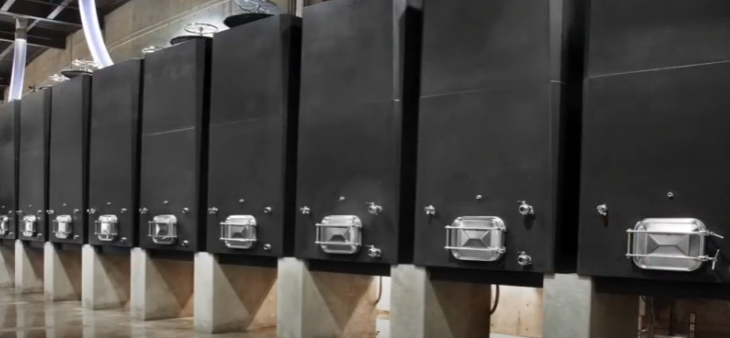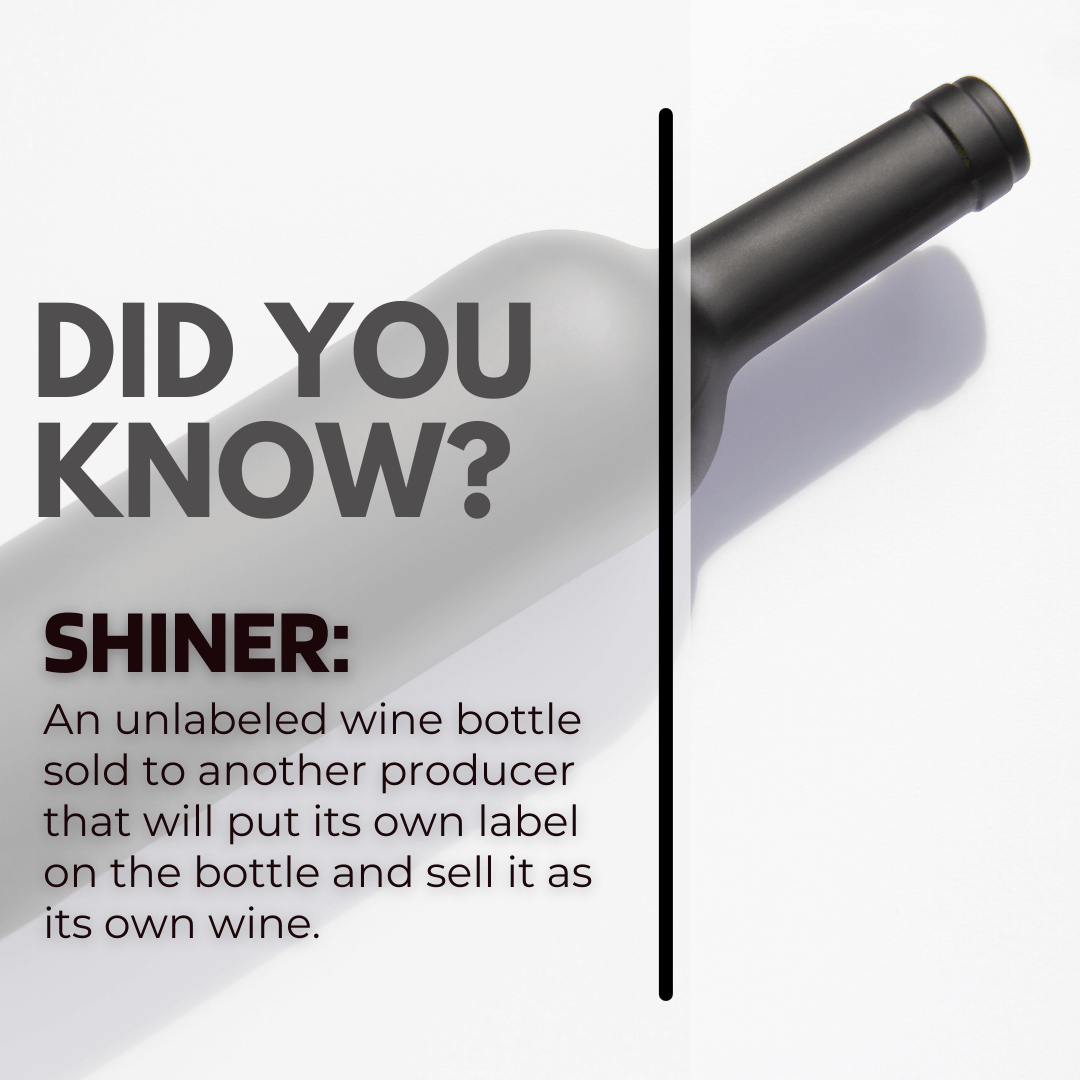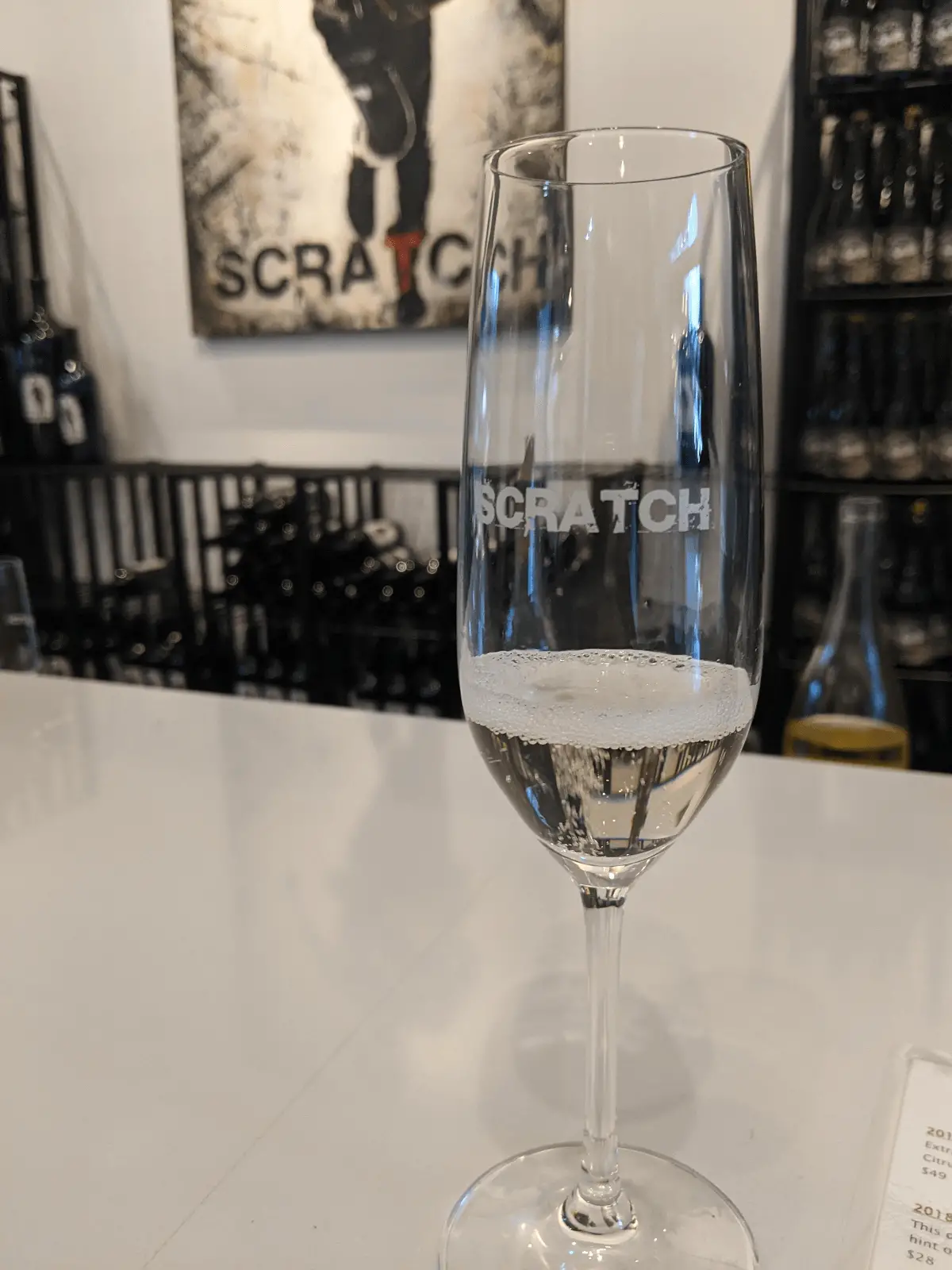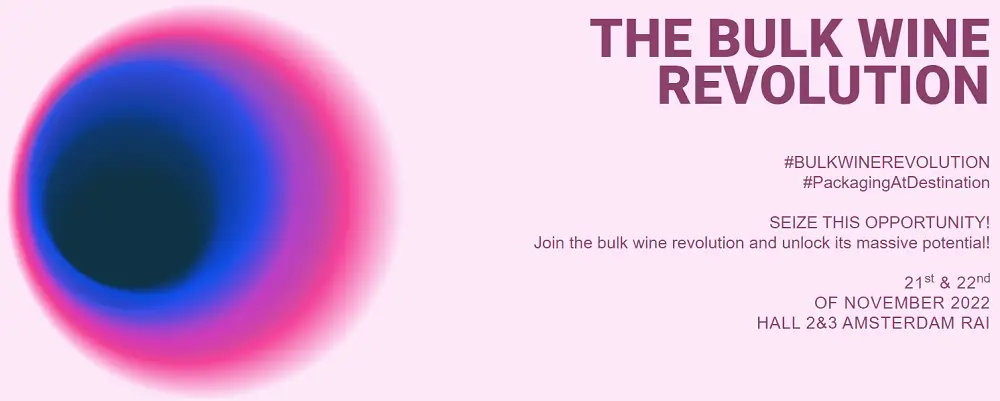
Ever heard of bulk wine or wonder how bulk wine works? In one of my winemaking classes, we had a group project where we designed a winery – everything from the crush pad to hoses and tank space. Part of our imaginary winery’s revenue model was bulk wine production. But just what is bulk wine and how does it end up in your glass?
Bulk wine is crucial in the global wine market. Wineries with surplus production offer it on the bulk wine market, allowing other producers or retailers to buy and sell it under their own labels. This benefits new wineries, meets demand in challenging vintages, extends current vintages, and provides diverse wine styles to customers.
Here’s what you need to know about the bulk wine market.
- Where Does Bulk Wine Come From?
- Is Bulk Wine Lower Quality?
- How Much Wine Is Sold On The Bulk Market?
- How Do You Find and Buy Bulk Wine?
- How Much Does Bulk Wine Cost?
- What Is A Wine Shiner?
- How Much Do Wine Shiners Cost?
- Why Wineries Use Bulk Wine: 8 Common Reasons
- Case Study: Sparkling Wine
- Thirsty for More?
Where Does Bulk Wine Come From?

Bulk wine can come from any wine producing region. When a wine producer (aka winery) makes a vintage of wine, it often already has an idea of how much wine it will sell.
In otherwords, there’s a known customer base.
The producer may be under contract with a distributor to provide ‘x’ number of cases to retail outlets and also have ‘x’ number of customers in a wine club, and have a good sense of the number of visitors that come to a tasting room.
If the producer owns their own vineyards, then in good years, there can be excess grapes and, by extension, excess wine that needs to find a home.
Or, bulk wine may be a part of the producer’s business model.
They know that they have access to award-winning vineyard sites or cheap grapes under contract with a grower and will make more wine than they can sell under their own label.
These producers plan to offer the excess wine to other wineries or merchants as an alternative revenue stream.
Is Bulk Wine Lower Quality?
Bulk wine isn’t necessarily lower quality. One of the surprising facts about the bulk wine market is that it offers up everything from cheap and cheerful plonk to wines of exceptional craftsmanship.
Bulk wine is big business and will move wines at every quality level, so never assume it’s less-than your more traditional bottle of wine.
Insider Wine Tip: It’s a common misconception that bulk wine is lower quality. Premium wines go on the bulk market, too.
How Much Wine Is Sold On The Bulk Market?
According to the World Bulk Wine Exhibition, bulk wine accounts for 38% of international wine exports worth over $360 billion dollars.
The question of how much wine is sold on the bulk market is an interesting one. The volume of bulk wine fluctuates depending on the year and vintage.
Years that produce ample harvests get added to bulk wine reserves. Years where growers struggle (wildfires, droughts, hail) pull from the bulk wine reserves.
In California, bumper crops in 2018 and 2019 led to 22 million gallons of bulk wine leftover from the two vintages.
But then wildfires in 2020 and 2021 meant that producers dipped into the reserves, and reduced the supply down to 8 million gallons. That’s just for the state of California over 4 years.
So you can see that the supply and demand fluctuate.
How Do You Find and Buy Bulk Wine?
Depending on the winegrowing region, bulk wine finds its way into the market via various routes. It could be something as simple as one producer having a conversation with another producer and making a deal to sell excess wine and move it from one winery to the other.
Or, the bulk wine might be for sale on a wine industry platform.
One example is an e-newsletter digest for the industry called Wineindustry.com.
Anyone can sign up for the newsletter. It runs regular advertisements for bulk wine from different grape growing regions up and down the west coast.
Another example is a wine broker that specializes in bulk wines. Check out Turrentine Brokerage for recent listings.
The next level is the World Bulk Wine Exhibition, where producers and buyers come together to swirl, sample, and land sales at a global level.
How Much Does Bulk Wine Cost?
Knowing that bulk wines come in at all quality levels, it logically follows that prices vary. Bulk wine can cost anywhere from $5.75 USD per gallon for Finger Lakes Niagra wine to over $95 USD per gallon for premium Napa Valley Cabernet Sauvignon.
Just because it’s bulk wine, doesn’t mean that it’s inexpensive or low quality.
Here’s a snapshot of recent bulk wine prices per gallon extracted from the Wineindustry.com e-newsletter:
Example Bulk Wine Price List
| Wine Type | Region | Price per Gallon |
|---|---|---|
| Cabernet Franc | Columbia Valley | $12.00 |
| Cabernet Sauvignon | Oak Knoll, Napa | $95.00 |
| Cabernet Sauvignon | Oak Knoll, Napa | $60.00 |
| Cabernet Sauvignon | Pine Mountain | $26.00 |
| Cabernet Sauvignon | Red Mountain | $22.00 |
| Cabernet Sauvignon | Yakima Valley | $13.50 |
| Catawba | Finger Lakes | $7.50 |
| Elvira | Finger Lakes | $6.25 |
| Merlot | Red Mountain | $25.00 |
| Niagara | Finger Lakes | $5.75 |
| Petit Syrah | Paso Robles | $10.00 |
| Pinot Grigio | Columbia Valley | $15.50 |
| Pinot Noir | Santa Rita Hills | $25.00 |
| Pinot Noir | Mendocino Ridge | $22.00 |
| Riesling | Finger Lakes | $15.00 |
| Rosé | Cotes du Provence | $12.00 |
| Sauvignon Blanc | Horse Heaven Hills | $12.00 |
| Zinfandel | Lodi | $9.50 |
Why would 2 Cabernets from the same region be priced differently? Price differences reflect demand, wine quality, and winemaking practices. For the Cabernet Sauvignon, the price could reflect that the wines went through different oak aging regimens.
French oak barrels and oak aging add significant costs to wine production. See why.
What Is A Wine Shiner?

Producers can sell bulk wine in large containers that hold hundreds or thousands of liters of wine, but they can also sell pre-bottled wine on the bulk market.
To sell bottled wine, the winery will go ahead and bottle their wine but leave the label off of the bottle.
The producer can sell this unlabeled bottle to another producer who will put their own label on the bottle.
This unlabeled bottle of wine is called a shiner.
Why would a winery sell wine bottled wine instead of wine in a bulk container? After all, glass costs more to move and ship…
Already bottled wine may appeal to some buyers who don’t have access to bottling facilities.
Or, the original winery may want to bottle an entire lot of wine, but hold off on labeling all of the bottles if it’s unsure that it can sell all of the wine under its own label.
Selling shiners can help a producer get quick access to wine that’s ready for sale right away.
How Much Do Wine Shiners Cost?
Here’s a rundown of wine shiner prices per case of wine (12 bottles) from a recent industry listening:
Example List of Wine Shiner Cost
| Wine Shiner Type | Region | Price |
|---|---|---|
| Cabernet Franc | Oakville | $360.00 |
| Cabernet Sauvignon | Oakville | $400.00 |
| Cabernet Sauvignon | Sonoma Valley | $144.00 |
| Champagne Style | Sonoma | $180.00 |
| Chardonnay | St Helena | $120.00 |
| Chardonnay | Sonoma Valley | $96.00 |
| Chardonnay | Dunnigan Hills, Yolo County | $72.00 |
| Pinot Noir | Santa Rita Hills | $180.00 |
The winery selling the wine may list minimum order units.
Why Wineries Use Bulk Wine: 8 Common Reasons

- A New Winery. Wine takes anywhere from 3-4 months to several years to make. You can’t sell your wine inventory to cover start-up costs and that causes cash flow problems. To help with cash flow, a winery will buy wine that’s ready for sale now on the bulk wine market.
- A Bad Vintage. We sometimes forget that wine is an agricultural product that grows under Mother Nature’s finicky ways. Spring frosts, summer hail, fall rain, fires, and drought can all damage grapevines and lower yields. This means that a winery may not have enough grapes to make the quantity of wine it forecasts selling. Purchasing wine on the bulk market allows them to have a product to sell.
- A Popular Brand. The world of wine revolves around branding. If you need confirmation of this, all you have to do is visit a winery’s website or look at a popular drinks magazine. A new brand that resonates with the market and takes off may not have anticipated rapid growth. In this case, the producer will turn to the bulk market to find additional wine to sell under its label.
- Stretch Inventory. In California, 85% of a wine that lists an American Viticultural Area (AVA) has to be from that geographical region. 75% of the named grape variety on the bottle has to be that variety (e.g., 75% of a bottle of Cabernet has to be Cabernet). This means that 15% and 25% of the wine in your bottle could technically be from somewhere else or some other grape, respectively. If you have a winning wine label that’s in high demand and you can produce 10,000 bottles of that label, you can increase your inventory by 25% to 15% while keeping your wine label the same.Adding wine from other regions sourced on the bulk market can increase the total amount of wine available for sale.
- Reduce Costs. Some grapes and AVAs are more expensive than others. Napa Valley Cabernet Sauvignon grapes, for example, are some of the most expensive grapes in the US. A producer looking to cut costs may decide to source 15% of their Cabernet grapes from Sonoma, Monterey, or even Paso Robles, where growing Cabernet costs less (see label laws in #4). This strategy reduces production costs while allowing them to still use ‘Napa Valley and Cabernet Sauvignon’ on their bottles.
- Diversify. Do you enjoy going wine tasting and sipping through a tasting menu? Maybe it starts out with whites, moves to rosé, and then onto reds. A producer may specialize in a few different wines, but not offer the range that a tasting room guest expects. By sourcing wines on the bulk market, the tasting room can serve a robust wine flight that’s suited to the changing tasting preferences of its clientele.
- Meet Contracts. Wineries enter into contracts with distributors and retailers (both wine shops and restaurants). Challenging growing conditions or problems with a wine lot may mean that they cannot meet their production contracts. Purchasing wines on the bulk market can help bridge shortfalls.
- Blending. Sometimes a wine just needs a little something else to make it perfect. That Cabernet Sauvignon may need a little plummy Merlot to soften it out, or just a tiny addition of Petit Verdot to give it some backbone and purple floral notes. The producer may seek out wine on the bulk market to increase the overall quality of their final wine through blending. Check out 7 Reasons to Blend Wine here.
Case Study: Sparkling Wine

If you love sparkles and fizz, you’re not alone! Sparkling wine is having a moment, finding popularity among cork poppers worldwide. Those fizzy bottles come from specially equipped wineries that can produce sparkling wines.
Your traditional winery won’t have the ability to make sparkling wine. Not to mention that your winemaker friend needs a different skill set to make brilliant bubblies.
Enter the bulk wine market.
Producers with the equipment and know-how fill the niche demand for sparkling wines by offering shiners to your local winery. Your favorite winery can put its own label on the bottle et voila! You get sparkling wine in your holiday wine club shipment.
Helpful Tip: Here’s what you need to know about joining a wine club and if it’s really worth it.
Here in Carmel, California, I was pleasantly surprised when I visited Scratch Wines, an edgy local producer, because they started out the tasting flight with a glass of bubbly.
Did Scratch make the bubbly? No. But were we content to enjoy their fantastic fizz and buy a bottle? You bet we were!
Thirsty for More?
Here’s another geeky wine post on how wine fermentation works.
And check out this post on how they decide what type of wine grape to plant where.




